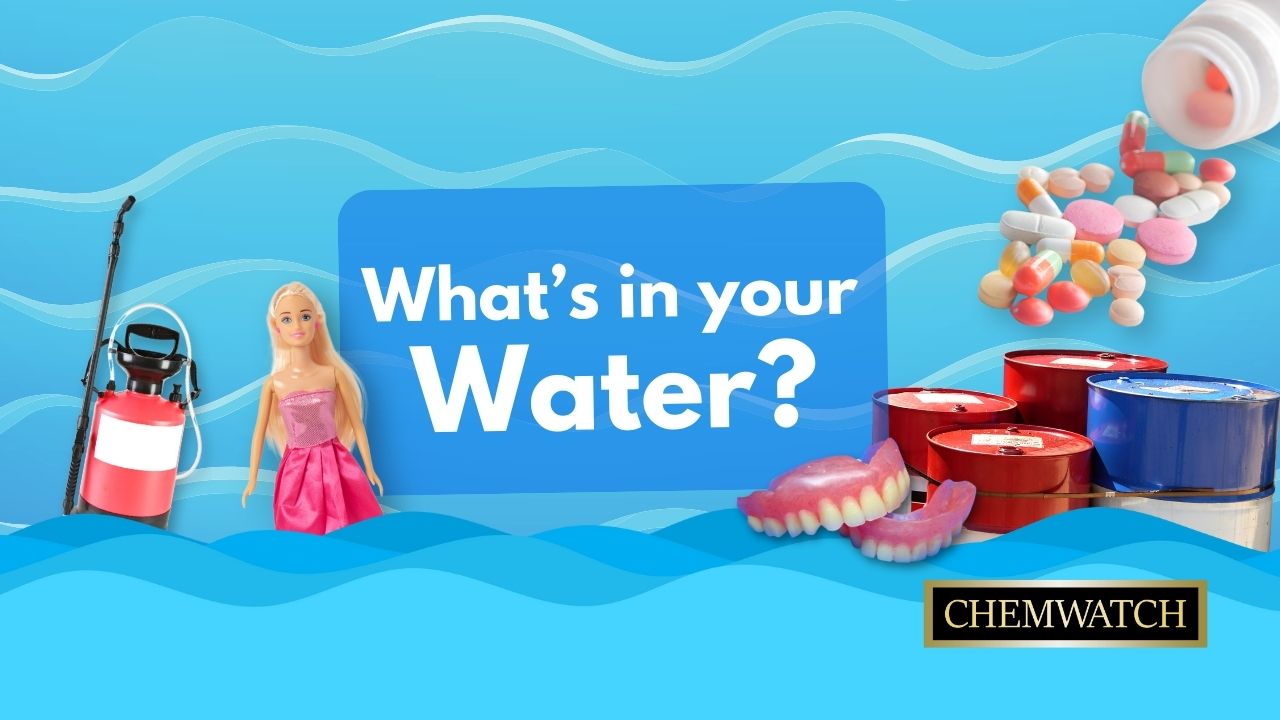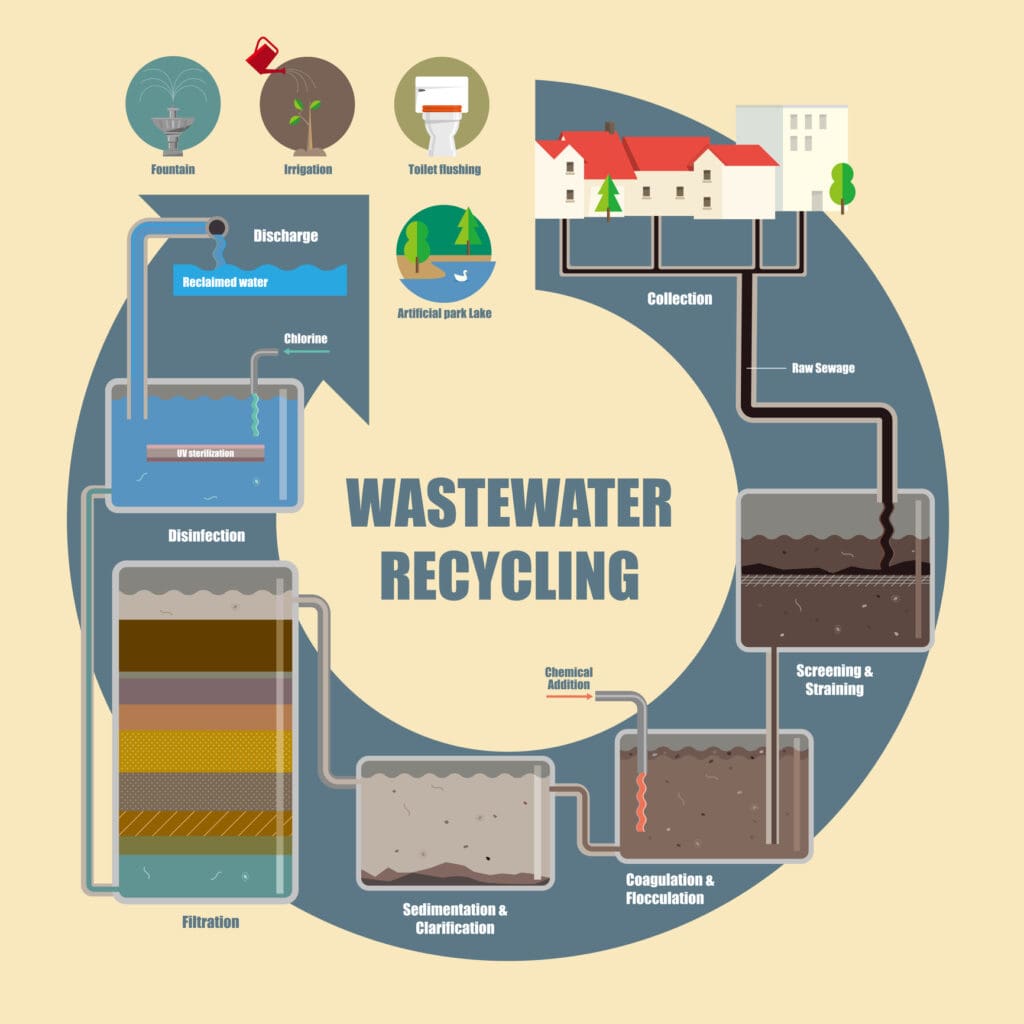
Ahh the serenity – when thinking of the great outdoors or that lovely swim at the beach you’re probably picturing pristine environs, with plenty of wildlife. But do you really know what’s in your waterways, especially after rainy weather?
Flooding and high rainfall events seen globally recently, bring devastation to homes, businesses, and local economies. It also has a significant effect on the local environment, not only physically damaging the surroundings, but also by releasing hazardous chemicals and other contaminants into waterways.

A recent study into chemical levels in the waters of protected marine harbours in the UK found there were 105 contaminants detected. Of these, 67 were pharmaceuticals, 29 were known pesticides, and nine were classed as recreational drugs. The study saw multiple samples taken from 21 harbour sites on the UK’s South Coast in 2022, and noted that contaminant levels were higher following high rainfall events and combined sewer overflow discharges.
A study released in late 2024 detected one ‘forever chemical’ - PFHpA - in protected marine bay Langstone Harbour. However, following sewage releases, eight of these chemicals were identified in water samples, including the banned PFOS (in both linear and branched forms), and PFOA. Most of the PFAS compounds identified were double the limit of detection.
Another study which saw water sampling conducted in the Sydney region across 16 months in 2022 and 2023 after high rainfall events saw 12 organic contaminants identified. Some of the highest concentrations were for the anti-inflammatory drug acetaminophen, and the diabetes medication metformin. Other contaminants identified included theobromine, ibuprofen, sucralose, and three benzotriazoles (mainly 1-H benzotriazole).
There are a number of other factors contributing to poor water quality following flooding or high rainfall events, including:
However, sewage overflows due to high rainfall or flooding remain a key way for hazardous contaminants to enter your local waterways. Water treatment is a critical step in preventing unwanted contaminants entering the local environment, but high rainfall or flooding events can significantly impact these processes. However, there are still some ways you can help minimise the issue in the first place, or avoid the more serious effects to your health after the incident has occurred.
Whether produced industrially or by individuals, wastewater should be processed to remove contaminants and reduce harm to the environment upon its release. Globally, around 52% of municipal wastewater undergoes treatment before being released into the environment, and in high-income countries this is estimated to be around 74%.
Many industrial settings will have their own on-site facilities to perform initial treatment of wastes and effluent, such as grease traps, sedimentation or settling ponds, tailings dams, and filtration or chemical processing. From here, the treated wastewater may then be released into the environment if it meets appropriate water quality guidelines, or it may find its way into municipal sewer systems and on its way to a water treatment plant.
Whilst the majority of wastewater found in sewer systems are from homes - for example in Sydney, 70% of wastewater requiring treatment in these sorts of facilities comes from residential homes.
In Australia, you’ve probably heard the mantra ‘pee, poo and paper’ – the only things that should be flushed into the sewer system. But despite over 99% of wastewater being water, there are plenty of other things lurking in there – including cleaning product residues, food scraps or pieces of food packaging such as apple stickers, hair, sand, cooking oil, paints and solvents, pesticides or other chemicals, and pharmaceuticals excreted from humans or even pets.

In many countries, when wastewater leaves your home, it travels through large pipes to a sewage treatment plant. Here it then goes through a number of steps before being released back into the environment:
After the initial screening, the sewage moves to the grit removal tanks – here things like rocks and minerals sink to the bottom of the tank.
Chemicals such as chlorine, or the use of UV light treatment may be employed to kill off any remaining bacteria or unwanted microorganisms.
Filtering involving specialised membranes such as microfiltration, ultrafiltration, or reverse osmosis may also be used. This can help make recycled wastewater suitable for use in homes, businesses or for agricultural or sporting field irrigation, and helps to remove trace nutrients and dissolved salts.
Nobody likes loose poo and other hazardous substances, especially not the environment. Unfortunately, a deluge of water into these usually finely-tuned sewage systems can completely overwhelm it.
This can lead to blockages, broken pipes, extensive overflows from sewer pipes, treatment ponds and more - releasing effluent into the environment in various stages of treatment, including as raw, untreated sewage.
In recent years, there have been around 23,000–75,000 cases of sewage overflow each year in the United States, and 14,600 annually in the United Kingdom. This had led to 11.4–37.9 million cubic meters and 39 million tonnes of untreated sewage being discharged into the environment, respectively. In the UK during 2023, combined sewage overflows discharged 3.6 million monitored hours of untreated wastewater into English rivers and coasts, however in 2024, this rose to 3,614,428 hours.
In a number of urban locations, sewage systems were also designed in the 19th and 20th century as ‘combined sewer systems’ to reduce flash flooding, so both traditional sewage and stormwater runoff enters the same system to be taken to water treatment facilities. Unfortunately, with climate change increasing rainfall events, and increased development causing more impervious surfaces, the amount of stormwater entering the sewage system rather than being absorbed into the ground has risen, overwhelming water treatment plants and increasingly contributing to sewage overflows.
Unfortunately, this sewage can bring a number of contaminants into the environment, including bacteria, fungi, drugs, pesticides, protozoa, helminths and other parasites, solids like sanitary products, wet wipes and condoms (and the aforementioned stray teeth and Barbie dolls!), ‘forever chemicals’ like PFAS, metals, nutrients, and other hazardous chemicals.
Aside from the unpleasant increased risk of copping a Bondi Cigar whilst swimming, contaminated waterways following sewage overflows can result in a multitude of negative health effects for you and other organisms living there.
Excess nutrients can cause algal blooms to form in waterways, such as the toxic blue-green algae that is harmful to you and your pets.
Bacteria such as E Coli have been linked to gastrointestinal disease outbreaks, whilst conditions or disease-causing organisms such as enteroviruses, hepatitis, giardiasis and eye infections are also commonly experienced following sewage overflows.
The chemical nature of the contaminants can also assert serious effects on the local wildlife, from synthetic oestrogens feminising fish populations and leading to their collapse, to antidepressants affecting the behaviour and feeding rates of aquatic organisms. Dioxins and furans originating from improperly disposed of household chemical wastes are also dangerous for aquatic organisms, causing carcinogenic, genetic, reproductive, and developmental effects...unfortunately these substances then go on to negatively impact the health of those who consume these fish and other seafood, like us humans.
‘Forever chemicals’ have been found in high concentrations in seaweed, with one study finding the levels of PFBA were 6000 times higher in the seaweed sampled in comparison to surrounding water.
Heavy metals such as arsenic and mercury, and other industrial contaminants such as solvents, dyes or even flame retardants, can also enter the environment via sewage overflow, whether from industrial or municipal sources. Many municipal sources of these sorts of contaminants are from improperly disposed of household chemicals, or trade wastes that have been partially treated but have not yet gone through municipal water treatment plants before an overflow has occurred. Given the variety of contaminants, these can cause various negative environmental effects, and impact the health of people encountering these contaminants in their waterways.
Following a high rainfall event, it’s advised not to swim in waterways or your local beach for the next 48 hours, longer if there has been flooding. Don’t head on in for a dip, particularly when you notice the water is discoloured or has an unusual odour, there is sea foam following flooding or heavy rainfall, or if your local EPA has issued a water quality alert.
If you do need to enter contaminated water, such as floodwater, it’s advised to cover all cuts and scrapes with waterproof bandages, and wear appropriate PPE such as rubber boots and gloves, and gloves. Following this, you should wash thoroughly in soap and warm water, wash any contaminated clothes in detergent and hot water, and attend to any wounds or other injuries sustained immediately.
To minimise the contamination of your local environs following high rainfall or flooding events and subsequent sewage overflow events, you can:
For further assistance on managing your organisation’s impact on the environment, hazardous materials and how they affect your community, contact Chemwatch on (03) 9773 3100. Whether it’s Environmental Product Declarations, SDS, risk assessments, labelling or more, Chemwatch can assist you in safe and responsible chemicals handling!
Sources